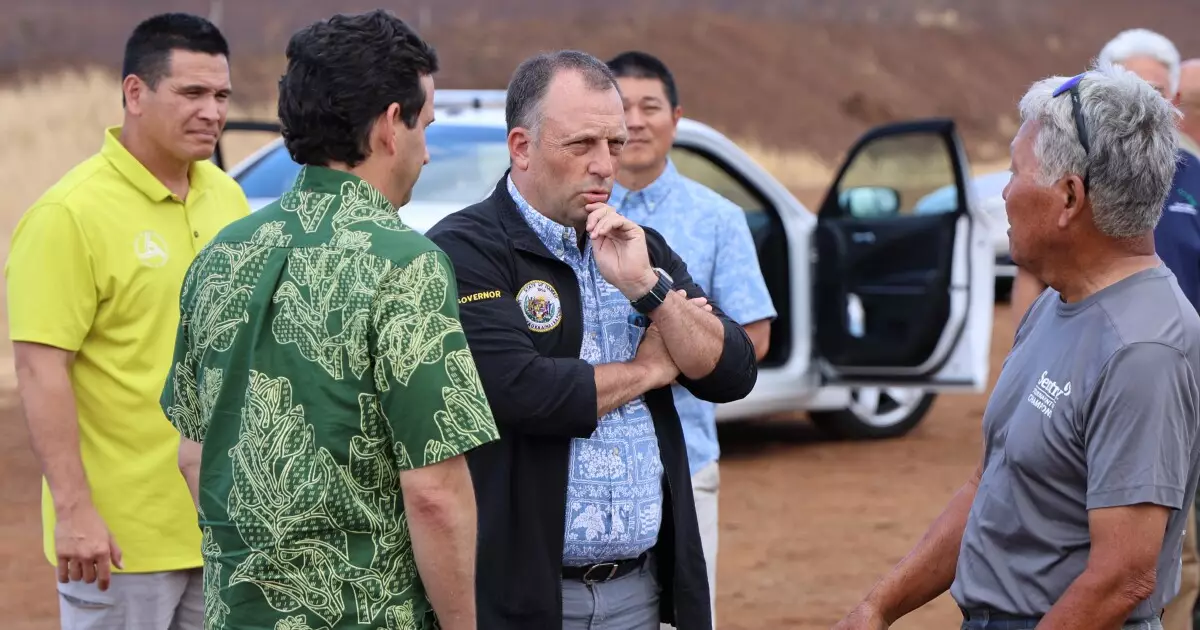As Hawaii prepares to enter the bond market in early December, the anticipation surrounding its taxable general obligation bonds is palpable. The state is set to raise $750 million, with its double-A category ratings reaffirmed. This move comes at a crucial time, as Hawaii faces challenges stemming from the slow recovery of its essential tourism sector, heavily affected by the devastating wildfires in Maui that occurred in August 2023. According to a recent report by Fitch Ratings, the current state of the economy reflects ongoing uncertainties and an uphill battle towards recovery.
The Impact of Maui’s Wildfires on the State’s Economy
Hawaii’s financial health cannot be discussed without addressing the catastrophic impact of the wildfires on Maui. Senior director Eric Kim, of Fitch’s U.S. Public Finance group, highlighted that the total estimated recovery costs could exceed an astonishing $12 billion. While the extent of the damage from the wildfires is still being assessed, it is evident that both federal and private resources are crucial in supporting recovery efforts. Given this backdrop, it’s notable that the state anticipates committing approximately $633 million directly towards recovery costs alongside nearly $900 million for litigation settlements. This financial commitment is indicative of Hawaii’s proactive stance in managing both immediate and longer-term fiscal responsibilities.
Hawaii’s financial stability is further underscored by ratings from major agencies. Moody’s affirmed the state’s Aa2 rating, acknowledging strong governance, solid finances, and Hawaii’s strategic location, although it did caution against the risks associated with high leverage and the state’s reliance on a tourism industry susceptible to global disturbances. Meanwhile, S&P Global Ratings also affirmed its AA-plus rating, emphasizing Hawaii’s diligent financial management.
These ratings suggest that while Hawaii faces significant challenges, its governance and financial practices lay a foundation for resilience. The ratings agencies have assigned stable outlooks, indicating a level of confidence in Hawaii’s capacity to navigate through adversity. The state’s strategic approach to managing its fiscal practices underlines its preparedness for potential future shocks, ensuring it remains positioned for long-term stability despite ongoing risks.
As Hawaii gears up for its bond issuance, the market’s response to these developments will be closely monitored. The timeline for indications of interest is expected to commence on December 3, followed by an institutional order period shortly thereafter. The strategic partnership with BofA Securities as the lead manager, alongside other investment firms, highlights the effort to maximize the bonds’ appeal in the market. Proceeds from these bonds are crucial, not only for financing capital projects but also for reimbursing previous state expenditures, reinforcing the idea of fiscal responsibleness in resource allocation.
The state’s current general obligation debt stands at $8.7 billion, according to the latest reports. The general obligation bonds rely on the state’s full faith and credit, presenting a compelling investment case despite the backdrop of high indebtedness.
Tourism Recovery and Long-term Sustainability
Tourism serves as the lifeblood of Hawaii’s economy, and its recovery trajectory is vital for the state’s financial recovery. Although visitor spending surpassed pre-pandemic levels by the spring of 2022, international visitor numbers still lag. This pattern indicates a mixed recovery outlook, with domestic volumes showing signs of improvement, rebound efforts are essential. The Hawaii tourism sector must adopt a proactive strategy in promoting itself and attracting visitors to rejuvenate its economic contributions while ensuring long-term sustainability.
Moreover, while the state is burdened with substantial long-term liabilities associated with debt and pensions, the adjustments made regarding retiree benefits and increased contributions have begun to show positive effects. These measures could potentially stabilize Hawaii’s financial outlook and promote fiscal resilience amidst daunting challenges.
Hawaii stands at a crossroads, facing the dual challenges of recovery from natural disaster and maintaining its economic stability heavily reliant on tourism. As the state enters the bond market with significant financial commitments aimed at recovery, the collaborative efforts of federal funding and smart fiscal management will play a pivotal role in shaping its financial landscape. Moving forward, Hawaii’s ability to navigate these hurdles will depend on adaptive strategies tailored for the evolving economic realities it faces. The emphasis on prudent fiscal planning is crucial to safeguard the state’s financial health and pave the way for sustained recovery and growth in the years to come.

